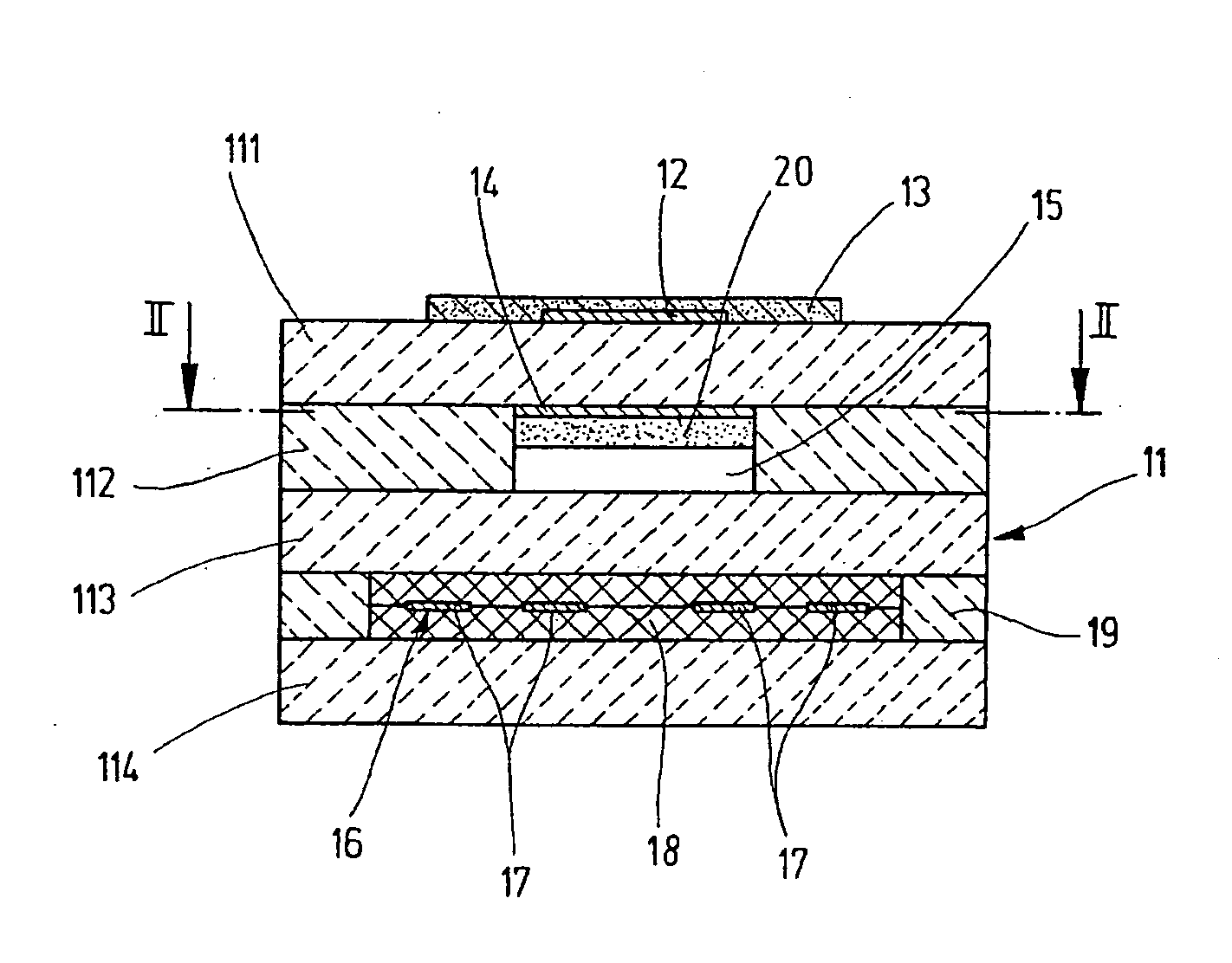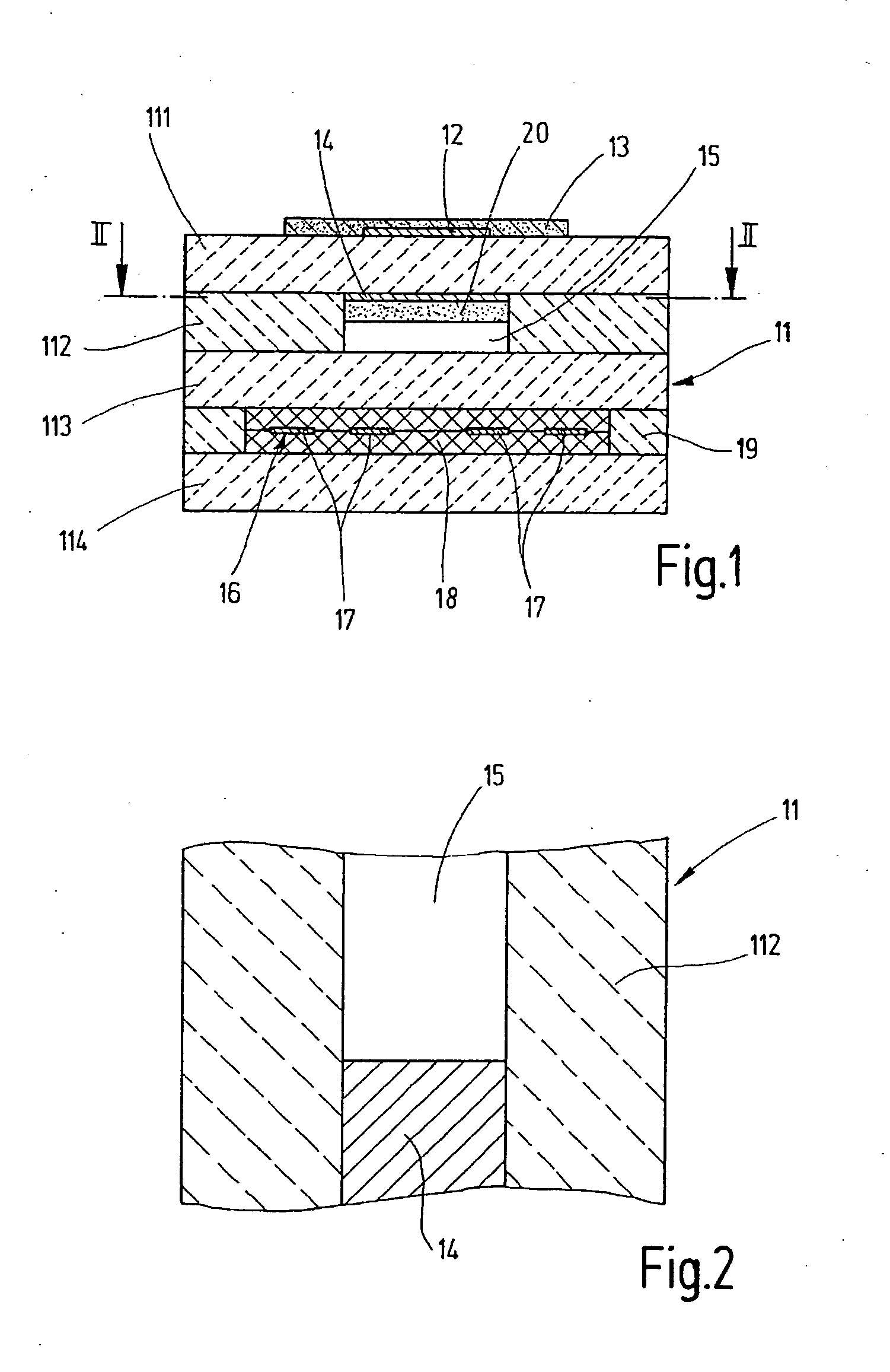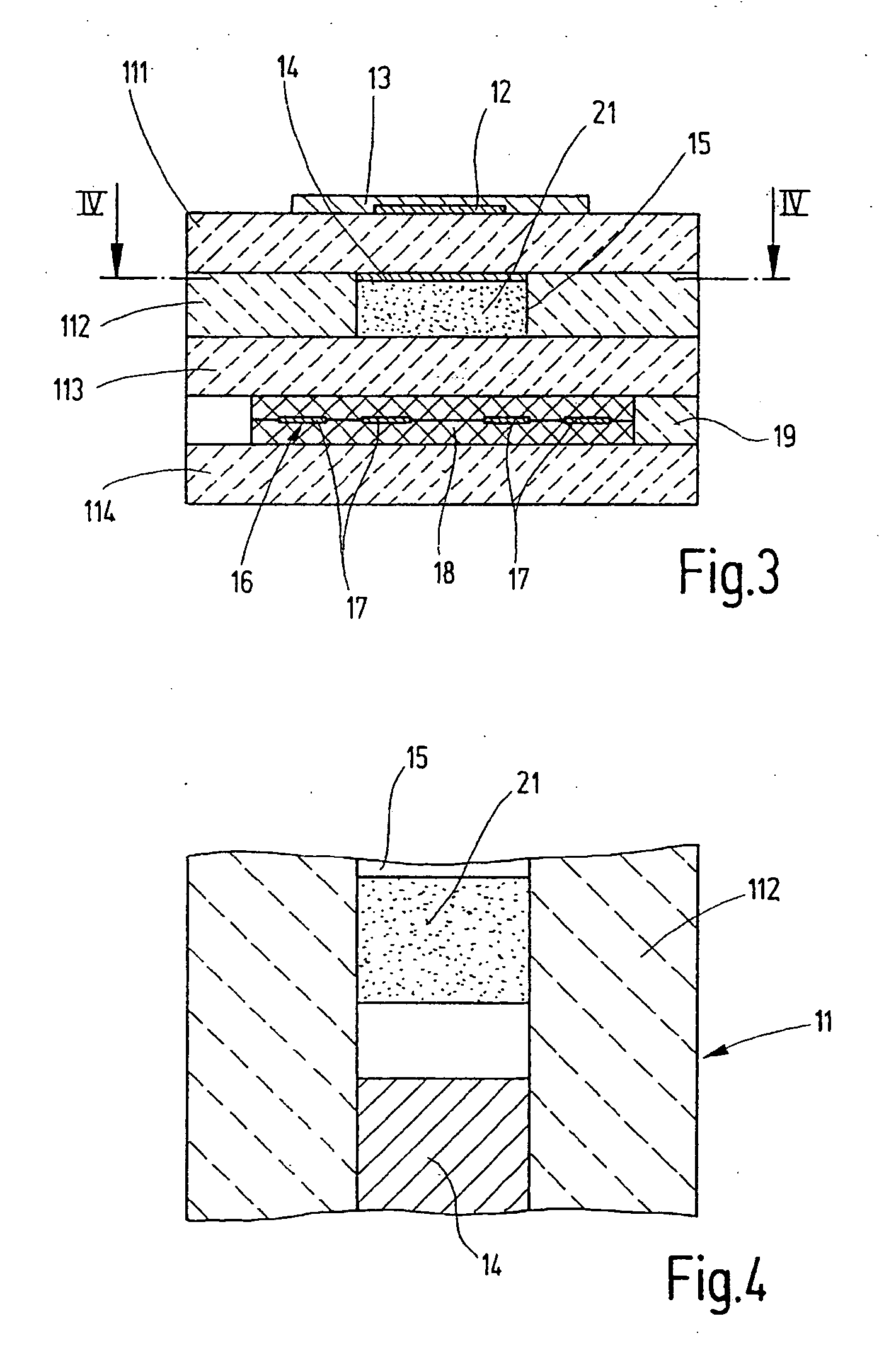Sensor Element for Determining a Physical Property of a Measuring Gas
a technology of a sensor element and a physical property, which is applied in the direction of measuring devices, instruments, material electrochemical variables, etc., can solve the problems of stress cracks in the solid electrolyte body, reduced functionality, and accelerated aging of the reference electrod
- Summary
- Abstract
- Description
- Claims
- Application Information
AI Technical Summary
Benefits of technology
Problems solved by technology
Method used
Image
Examples
Embodiment Construction
[0012] The sensor element shown in two different sectional views in FIGS. 1 and 2 for a lambda sensor, operating according to the Nernst (potentiometric) principle for measuring the oxygen concentration in the exhaust gas of an internal combustion engine, as an exemplary embodiment of a general sensor element for determining a physical property of a measuring gas, has a solid electrolyte body 11, which is made up of a plurality of oxygen-conducting solid electrolyte layers 111 through 114, which are in part designed as ceramic films such as solid electrolyte layers 111, 112, and 114 and in part as a printed layer such as solid electrolyte layer 113. Zirconium oxide (ZrO2) fully or partially stabilized by yttrium, for example, is used as a solid electrolyte material. The integrated form of planar ceramic solid electrolyte body 11 is produced by laminating together the ceramic films printed with functional layers and subsequently sintering the laminated structure.
[0013] On first soli...
PUM
| Property | Measurement | Unit |
|---|---|---|
| thickness | aaaaa | aaaaa |
| porosity | aaaaa | aaaaa |
| thickness | aaaaa | aaaaa |
Abstract
Description
Claims
Application Information
 Login to View More
Login to View More - R&D
- Intellectual Property
- Life Sciences
- Materials
- Tech Scout
- Unparalleled Data Quality
- Higher Quality Content
- 60% Fewer Hallucinations
Browse by: Latest US Patents, China's latest patents, Technical Efficacy Thesaurus, Application Domain, Technology Topic, Popular Technical Reports.
© 2025 PatSnap. All rights reserved.Legal|Privacy policy|Modern Slavery Act Transparency Statement|Sitemap|About US| Contact US: help@patsnap.com



